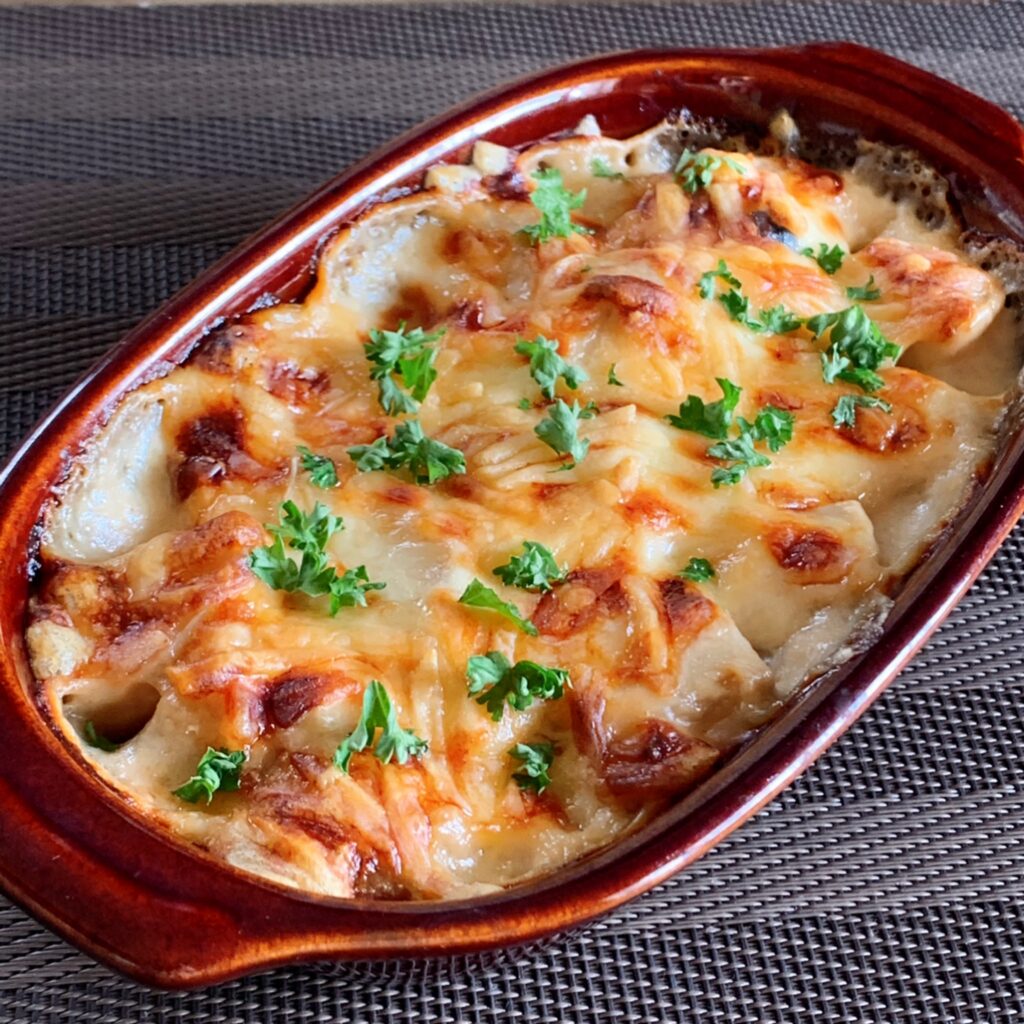
Taro Gratin(里芋グラタン)
What kind of dish is Melty Taro, Chicken And Mushrooms Gratin??
A gratin made with seasonal taro, chicken, onions, and mushrooms.
It’s hard to make mistakes because the taro gives it a natural consistency. Enjoy the texture of fluffy taro.
Honestly, I don’t want to use taro because it’s a pain to peel it. But it’s so delicious that I make it every year.
This gratin uses seasonal taro, chicken, onions, and mushrooms.
If you’re not used to making homemade white sauce, you might feel unsure about adjusting the thickness.
However, if you use taro, you can create a white sauce with just the right thickness thanks to the slimy component called galactan that taro contains.
To be honest, I don’t like using taro because peeling it is a hassle, but it’s so delicious that I make this recipe every year when taro is in season.
Please enjoy the fluffy, melt-in-your-mouth texture of taro.


NUTRITION FACTS : Melty Taro, Chicken And Mushrooms Gratin
- 1446 kcal
- Protein 84.1 g
- Fat 74.2 g
- Carbs 110.3 g
- Salt Equivalent 5.6 g
Calories are total amounts. This will serve about 6 people.
INGREDIENTS Melty Taro, Chicken And Mushrooms Gratin(For 3 dishes)
- Taro 350g
- Salt 1g
- Chicken thigh 150g
- Onion 150g
- Garlic 8g
- Butter 5g
- Shimeji mushrooms 40g
- King oyster mushroom 40g
- Salt 3g
- Flour 12g
- Milk 500g
- Water 100g
- Cheese 120g
How to make Melty Taro, Chicken And Mushrooms Gratin
- Peel the taro. Taro will become slimy when wet, so peel it when dry. It is safer to peel taro using a knife rather than a peeler.
- Wash the taro and cut it into bite-sized pieces.
- Rub salt into the taro and wash it with water.
- Cut the chicken thighs into bite-sized pieces, and thinly slice the onion and garlic.
- Add taro, chicken thighs, onions, garlic, and butter to a frying pan and stir-fry.
- When the onions become soft, add shimeji mushrooms and king oyster mushrooms and stir-fry.
- Turn off the heat and sprinkle salt and flour evenly all over.
- Mix well, add milk and water, and simmer over medium heat.
- Once it thickens, turn off the heat.
- Place on a heat-resistant plate and top with cheese.
- Bake for 20 minutes on the middle rack of an oven preheated to 250℃.



コメント